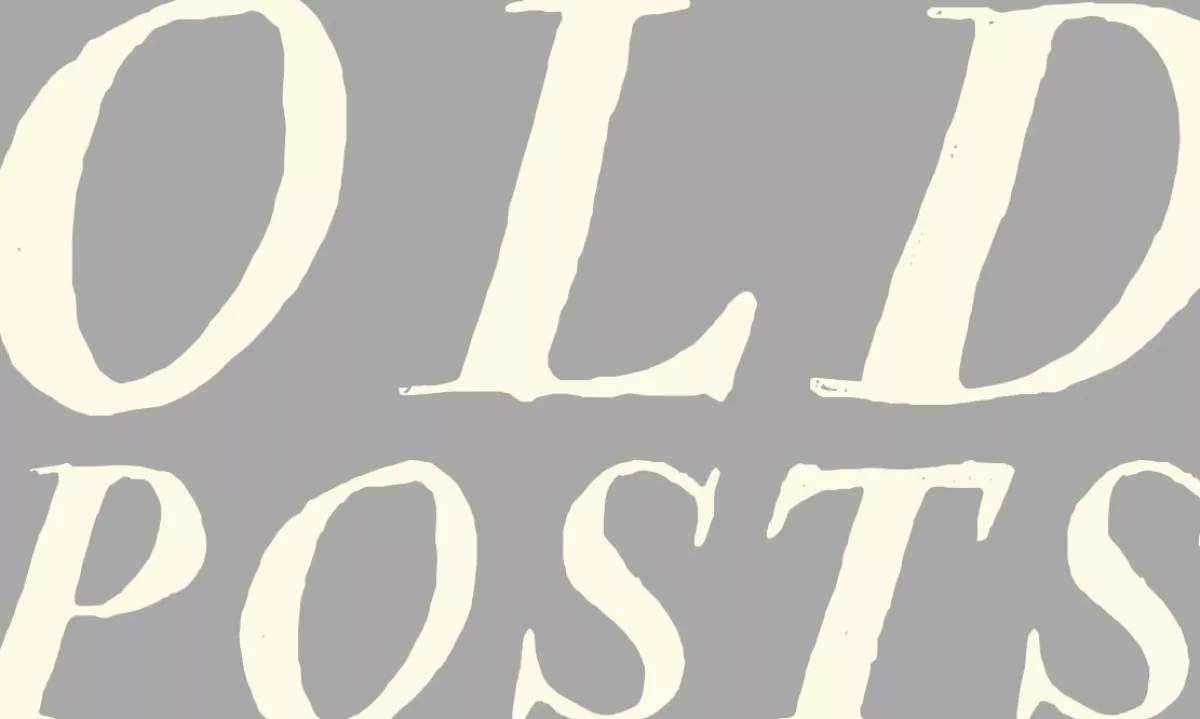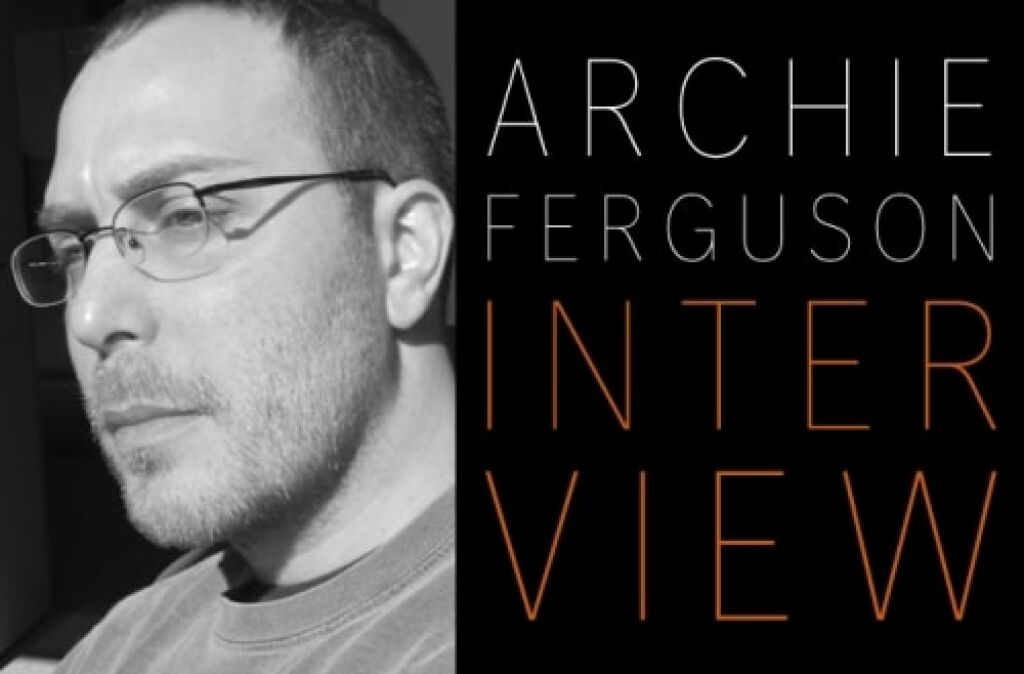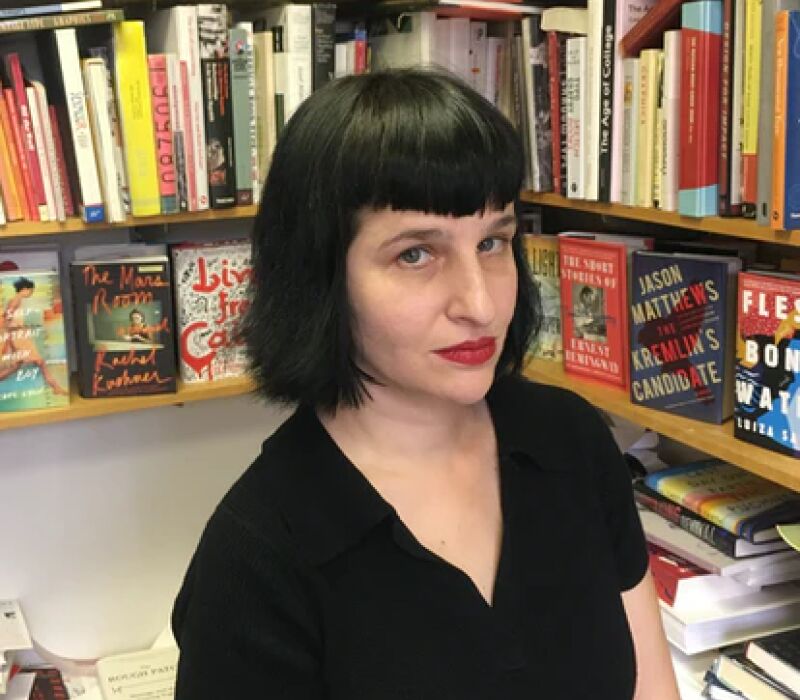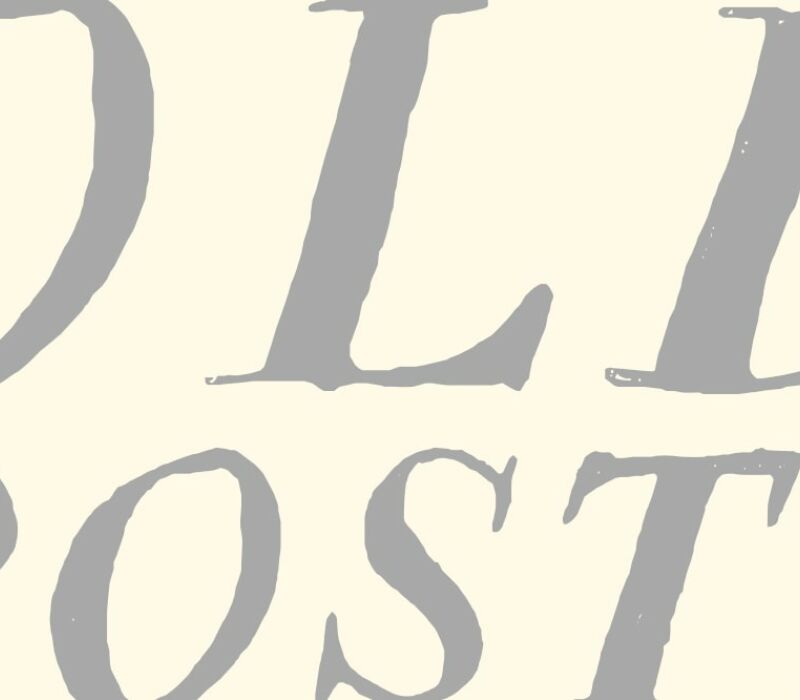
Archie Ferguson: "Being a designer is part of the fiber of my being."
WRITTEN BY: Ian
February 22nd, 2010
I met Archie on Facebook, where young nobodies like myself hunt down legendary designers and make them their "friends." Actually, Archie was kind enough to take note of me and ask what it was that I want out of my career. I put it pretty plain terms: I was looking to work with folks like himself, to have four to six great art directors to work with as my bread and butter. Wouldn't we all?
What impressed me, and continues to impress me, is Archie's approachable and non-judgmental demeanor. I recently met with him for lunch while he visited with his wife in Portland, Ore. (He wore a shirt with the word "SERIF" boldly printed on it, only reinforcing that he is still very much a hip "designer").
The essence of our conversation was nothing but pleasant, open, safe and casual. It allowed each of us to learn a bit about ourselves without crowding the discussion with too much design talk. The result is that I feel I forged a friendship with him that goes beyond our work relationship—the most I could've hoped for out of a chance encounter on Facebook.
So, in the end, Facebook is not that bad. Not all art directors are pigs. And Archie Ferguson is well and alive, folks. Without further ado…

Where did you study design, and how did you get hired at the publishing house Knopf?
I graduated in 1984 with a B.F.A. in graphic design from the School of Visual Arts in New York City. A few of the more notable people (interestingly all women) I had the unwitting good fortune to study with there were Henrietta Condak, Carin Goldberg and Paula Scher.
I started working at Random House Inc. in 1987. Marjorie Anderson hired me as a designer for Times Books. (Another woman. I know that's obvious, but there's a pattern.) I'd been freelancing for Knopf for a couple of years, and in 1991, Random House underwent some restructuring. That's when Carol Carson, another woman of great influence in my career, hired me as part of Knopf's art department.
In 1999, I became the art director at Pantheon and Schocken Books. Technically, I was no longer part of Knopf's art department, but still part of the Knopf Publishing Group.

How often did you collaborate with others on projects while at Knopf? Are there any particular projects you care to mention that were a result of collaboration with fellow designers Chip Kidd, Barbara deWilde or Carol Carson?
I collaborated only once with Barbara on a book by Chaim Potok. Carol, Barbara and Chipp did more collaboration; I tended to keep to myself. To this day, I don't like people looking at my work while it's in progress.
In retrospect it seems that as a group, we unknowingly but conscientiously created and shared a common aesthetic and ideas about approach. We all had an intensity and passion for what we did, and we were feeding off of each other just by occupying the same space five days a week.
One reason for the success of the group was Carol's trust in each of our abilities to do what we felt was right. She didn't feel the need to be controlling by over-art directing, and she pretty much let us do what we wanted. There was also a great camaraderie and sense of shared experience among the four of us, especially once we started to get some recognition.
When did you leave Knopf? Without delving too much into politics, what were some of the reasons you felt it was time to break up the historic team?
I left Random House in 2007 to become the art director at HarperCollins Publishers. Sorry, there isn't any great political intrigue in the story, just opportunity. I'd been working at Random House for 20 years—half my life, give or take. I felt like I'd grown up there. I even met my wife in those hallowed halls.
Everybody has to strike out on their own at some point. My time at Random House made me what I am today, and I'll always remember it fondly
And for the record, deWilde was the first of our group to leave when she went to work for Martha Stewart Living.

I imagine (and have been told) that being a publishing art director these days is less glamorous than it sounds. We often have an unrealistic view of what the position entails on a day-to-day basis. How does this role work in the modern publishing environment?
Publishing has always seemed a lot more glamorous than it is. And if it ever was glamorous, those days are long, long gone. These days I spend a lot of time answering emails – not phone calls – from far and wide, running up and down the stairs (good for the glutes), doing damage-control, and feeling more like I'm a psychologist as much as anything else.
Don't think that the base of publishing is much different than it's ever been, except for the technology. It just maybe happens at a quickened pace. That's the modern part.
Not that quantity matters, but about how many books have you designed in your career?
It's impossible for me to say exactly how many book jackets and covers I've designed. As anyone in the business will tell you (and it makes sense), you create a lot more cover designs than will ever make it to print.

My personal total is certainly well over 1,000, though, and maybe closer to 2,000. If my bad math is correct, there were a good 10 to 15 years when I was designing around 100 jackets and covers a year, including both staff and freelance work. Entire books (jackets and interiors) that I've designed? Less than five.
Name three of your personal favorite designs. I know this might seem unfair, as you have produced an amazing body of quality work. But if you had to name three books that you would take to your grave, which would they be?
There are many that will follow me to the grave and some that should be put in a grave. But I would be hard-pressed to name the three that I'd take to the grave. I hope that I haven't already passed my prime. That would be grave, wouldn't it?

As an art director at Harper, you work with some amazing talents in the book-design world. Who are some of your top designers today?
I wish life were not such a popularity contest. There's always someone better, and there's always someone worse.
Do you think the art world could be described as a pissing contest? Are people simply trying to protect their careers, or is it some deeply rooted artist thing? I have often found it difficult to talk to art directors in my own career, and in many ways, the doors seem shut to younger, aspiring designers.
At the root of it, I don't think it's quite as much of a contest as a basic human need for recognition. I'm not discounting ego in the least; deep down we all want to be a movie star. It's culturally ingrained in us as part of the "American dream."
I never had trouble talking to art directors early on—maybe because I never really tried or never really had to. I was lucky in that I didn't have to go banging on doors to get work; they sought me out. Now, as an art director myself, I don't mind talking to young designers to help them get their bearings. That said, please don't call.
Do you see yourself staying in publishing as the industry landscape is shifting so dramatically toward electronic media?
Certainly for now, I see myself staying in book publishing. After all is said and done, I really enjoy what I do. There will always be a market for real, bound books. The new, electronic mediums will still need some sort of "cover," if you will. Designing for books is and has always been about representing content, to a greater or lesser extent.

You mentioned in a talk we had in Portland that you felt a pull to architecture. Is it possible that we'll ever see "Archie Ferguson: Architect" on your business card? Also, do you feel that designers today are wise to diversify their practice, or should they instead specialize in what they're good at? I guess I see the merit of allowing things like architecture to inform our approaches to book-cover design. But making that leap—especially in your personal career—could be viewed as a sign that you're exploring other options for a reason.
I sometimes fantasize about realizing my lifelong obsession with architecture in a more actualized way. Last year I applied to Cooper Union School of Architecture, but they weren't interested. So I don't see where that's going at the moment.
For years now, I've had the urge to paint on really large canvases. I could also see myself expanding on my novice interest in photography, or even in moving images, furniture or industrial design. I feel strongly that as a designer/artist, I can do more than just design book jackets (hint, hint, to anyone reading.)
People like Andy Warhol, Tibor Kalman and Massimo Vignelli—among others— impress me for countless reasons, particularly because they all started as graphic designers but were able to take the tenets of that and go beyond. Luckily I'm not dead yet.
As an art director, about how many covers do you design yourself, and does freelance work still come your way? Is it hard to conceptualize and get back into that rhythm of being a designer (constantly looking for inspiration and at type, art and what other designers are doing, etc.)? Or is it like riding a bike—you get a great project and your mind just can't stop pedaling?
Most of my time at Harper is taken up by the managerial aspects of being the art director. Lately I've only been able to design a few titles per season. I'm also not getting as much freelance work. Maybe people think that I'm too busy being an art director or that "it's the economy, stupid," or both.
It's a very good day when I actually get to design something I like, and an even better day if and when it gets approved.

Being a designer is part of the fiber of my being. As a visual and analytical person, I don't think I'll ever stop seeking meaning or connection between things. Though I've had much guidance along the way, I don't feel that design was something I was taught. Therefore I can never forget it. I imagine myself on my deathbed, marveling at the beauty of the fading light or wondering who the clod was that chose such an awful pattern for the dreaded drop-ceiling tiles.
You've been teaching design at the School of Visual Arts for two years now. Is there any particular student work you can share that bears mentioning?
No, none. But I do like being able to give back.
What are some design trends that you see in book design these days, and do you feel they are helping or destroying the art form?
To call it an art form is very lofty of you. If only marketing would see it through those eyes - imagine what a visual cacophony the bookstore would be.
The industry is becoming more conservative at the moment, as happens in a down economy, and it's suffering from a seemingly ever-shrinking share in an ever-expanding marketplace. That combination always manifests itself as safe (i.e. uniform) design.
I wouldn't say that that's destroying the art form, but rather it's informing it. Technology is making designs more complex, technically speaking. It's a general trend or perhaps a progression of technology itself, as access to technology allows an expansion of vocabulary both visually and idiomatically. This can sometimes lead to overworking or over-designing. Call me old-school, but I like to keep it simple.

Finally, who were some of your personal teachers and design heroes?
If you want to get all Zen about it, experience is the ultimate teacher. But I am struck by the fact that in this still very male-dominated world, the most influential people in my career have been women. I was extremely fortunate to have Henrietta Condak, Carin Goldberg and Paula Scher as teachers. It was in Henrietta's typography class that I had my "I got it" moment.
Once I was out of school, if it weren't for Louise Fili showing Marjorie Anderson my portfolio (and Marjorie then taking a chance and hiring a very oddly dressed kid), I can't imagine what my life might be like today.
It's been nothing short of an honor to work with and know you. Your contributions to book-cover design are exceptional and it makes me happy every time I pick up a book I like at the local bookstore and see those grand little words on the back flap: Jachet design by archie Ferguson. Your design work has truly stood the test of time. Thank you for your time and words.



